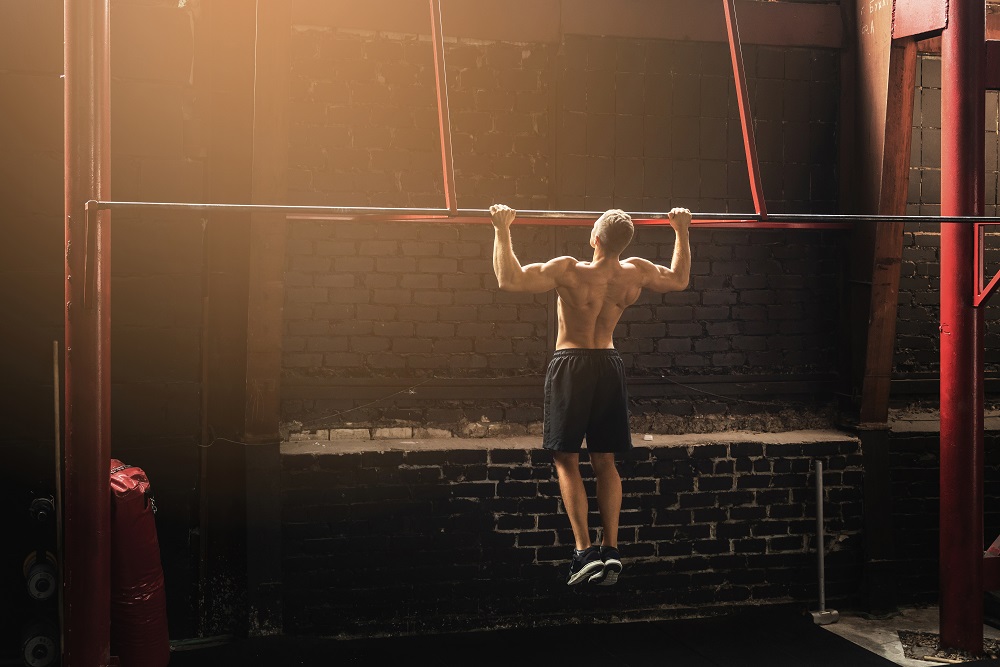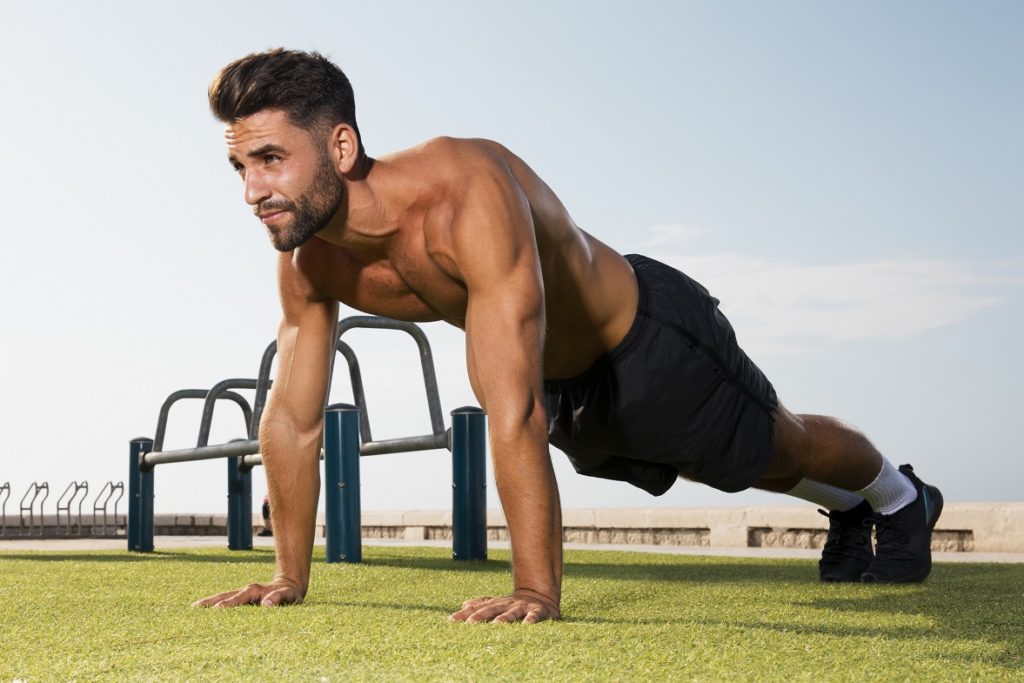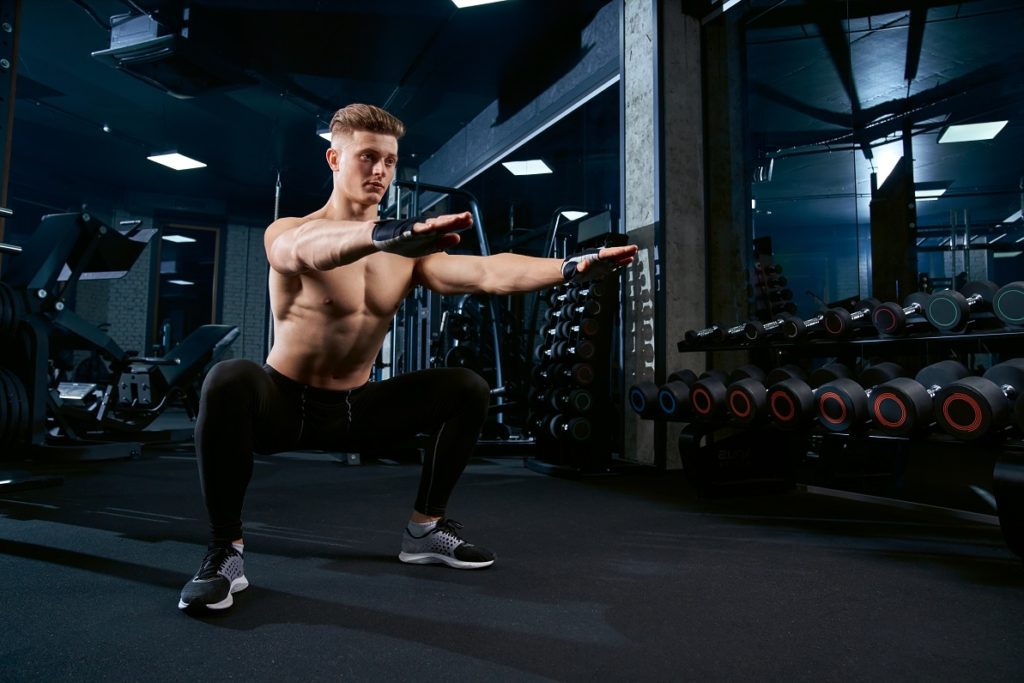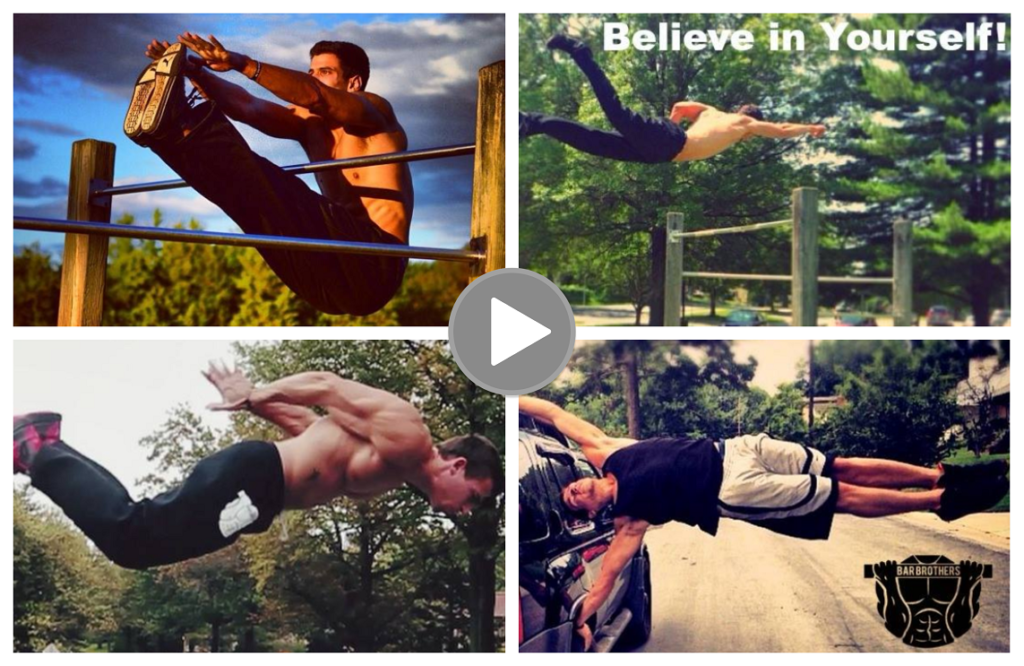Disclosure: This post contains affiliate links. Meaning if you click on a link and make a purchase, I'll earn a small commission at no extra cost to you.
I read a quote a while back that made me laugh. But it also makes a lot of sense if you’re looking at starting any type of calisthenics workout for beginners.
It goes a little something like this…
“Keep it stupid simple, it’s simple stupid.”
Short and to the point, right?
Now for me, the take-home message here is that a simple approach will almost always beat out a complex, half-baked workout plan with little to no structure.
As long as you’re smart about it, that is.
To be fair, this is something I regularly do whenever I workout. Because I honestly believe it’s what separates success from failure when it comes to getting results.
Especially if you’re a beginner.
See, calisthenics and training in general and aren’t as complicated as most people make out.
Sure there’s a bit of a learning curve.
But once you master the basics and learn how to keep things challenging. It becomes relatively straightforward to build a decent level of strength and size.
Provided you put the hard work in.
So with that said, today, I’m going to share with you some of my best-kept training secrets that have personally helped me go from a calisthenics beginner…
…To the ruggedly handsome, yet slightly unhinged calisthenics warrior I am today.
Let’s get rolling…
WATCH VIDEO: Learn How To QUICKLY Master The Planche, Muscle-Up, Human Flag, And Other Advanced Calisthenic Moves That Defy The Law Of Gravity
(Video Will Open In A New Window)
Table of Contents
Calisthenics Rules You Need To Follow If Your A Beginner
Now, since your reading this blog post, I can safely assume that you’re pretty new to calisthenics. And you’re probably looking for something that not only gets results…
…But gets them pretty damn quick.
And while there’s more that one way to get these results, there are always a few go-to rules you should always follow to get the most bang for your buck.
And here they are for your viewing pleasure…
Rule #1 – Exercise Selection
This is the magic bullet of any workout, and it should be your first point of call when it comes to calisthenics.
And you can do this by utilizing specific exercises that result in maximum strength and muscle. While cutting out all the unnecessary fluff and filler that most fitness guru’s preach.
The best way to do this is to use compound exercises.
Basically, a compound exercise is any movement that works multiple muscle groups at once.
For instance…
- Pushups – Chest & Triceps
- Pullups – Back & Biceps
You get the idea, right?
I’ll be talking a little later about how to structure these exercises and combine them in a way that (when applied correctly) gets you the type of results Wolverine would kill for.
But for now, just remember this…
Compound exercises = More Muscles Worked = Kick-Ass Results.
Rule #2 – Exercise Form
This is equally as important as exercise selection. But it’s something most people neglect with a passion because they don’t think it’s a big deal.
Well, I hate to break it to you, but you’ll also find that it quickly kills your progress if you don’t give it the attention it deserves.
Now there are 3 particular things you need to consider when focusing on exercise form.
They are…
- Range Of Motion
- Repetition Speed
- Muscle Engagement
And adopting one without the others is kind of like doing your homework and not handing it in.
Meaning you’re not going to get the best results for your time.
Moving swiftly on…
Rule #3 – Calisthenics Progressions
The next thing you need is an effective plan of action that focuses on progressive calisthenics.
Without going into all the fine details, you need to find a way to increase the load on specific muscle groups if you want to continue to get stronger.
With basic weight training, it’s simple. Because all you really have to do is add weight to the bar to progress.
But when it comes to calisthenics, beginners tend to get a little lost in the whole thing because they can’t figure out how to move past the basic exercises.
This usually results in most people giving up on their workout before seeing the real benefits of calisthenics.
However, the good news is that progressing with calisthenics isn’t as difficult as some people claim it is.
In fact, I’d be willing to bet my mother’s pension that if you followed a step-by-step calisthenics program that showed you these progressions. You’d be well on your way to hitting your goals sooner rather than later.
WATCH VIDEO: Learn How To QUICKLY Master The Planche, Muscle-Up, Human Flag, And Other Advanced Calisthenic Moves That Defy The Law Of Gravity
(Video Will Open In A New Window)
The 6 Basic Calisthenics Movement Patterns
If you cut out basic isolation exercises, there’s only really 6 specific movement patterns you need to follow to get started with calisthenics.
They look like this…
- Horizontal pushing movement (Pushups)
- Horizontal pulling movement (Inverted Rows/Australian pullup)
- Vertical pushing movement (Dips or Pike Pushups)
- Vertical pulling movement (Pullups/Chinups)
- Squats Bodyweight Squats/Lunges)
- Hinge Movement (Hip Thrusts/Glute Bridge)
And when it comes to creating a super cool workout, when paired together, these exercises will work your entire body leaving no stone left unturned.
What’s more, each of these exercises can be modified to make them incredibly easy or as hard as a motherf*cker. So you can adjust them to suit depending on your current strength and fitness level.
Personally, I rarely ever stray from these movement patterns because there’s isn’t really a limit to how far you can go with them.
I mean, sure I’ll add in a little core work or a few supplementary exercises if I’m trying to learn new calisthenics skills.
But most of the time, everything you see above is more than enough to keep things interesting and challenging…
…At least for me anyway.
A Tried And Tested Calisthenics Workout For Beginners
There are probably thousands of calisthenics workouts that range from newbie friendy, right through to the advanced level of a calisthenics spartan warrior.
And while I could talk endlessly about the different types of workouts you can try.
I think it would be far more beneficial if I gave you a basic outline of what works best and takes it from there.
I’ll explain afterward why I structured the workout this way along with the specific sets and reps needed to get results tailored to your goals.
But for now, here it is in all its glory…
Exercise #1 – Pullups/Chinups

Now, this is the ultimate back exercises, but it’s not exactly beginner-friendly.
So what I’d recommend doing here if you’re not quite ready for regular pullups. Is to try assisted pullups using a resistance band.
Alternatively, you could even perform negative pullups until you’ve built up enough strength to execute your first full pullup.
Another quick thing I should mention is that chinups (palms facing towards you) are way easier than pullups (palms facing away from you). Because they place a lot less emphasis on your lats and shift it towards your biceps.
So if you can’t do many pullups, consider chinups until you’re a little bit stronger.
Exercise #2 – Dips

Usually, the classic dip is performed on parallel bars. But since this is a beginner workout, you might need to regress the exercise perform standard bench dips to make things a little easier on yourself.
Now, parallel bar dips are pretty awesome at working your lower chest and triceps. So if you can already manage to get a few reps out with proper form and a full range of motion. You can expect to see some pretty stellar results if you continue to do them regularly.
Exercise #3 – Inverted Row/Australian Pullup

The inverted row is another pulling movement. But it’s ideal for beginners because it’s a great stepping stone to being able to perform pullups.
Although the inverted row is meant to be performed from a horizontal position. You can make it even easier by adopting a more vertical position until you get stronger.
To make sure you’re executing this exercise with proper form. Make sure you pull your chest level with bar and really squeeze your shoulder blades together at the top of the movement.
Exercise #4 – Pushups/Pike Pushups

Next up, you’ve got both the pushup and the pike pushup.
Now, unless you’ve been living under a rock, I probably don’t need to tell you how to perform a pushup.
Not only is it another great exercise for targeting the chest and triceps. It’s also easier than parallel bar dips, so it should help build a fair amount of strength to assist with different types of pushing exercise.
The pike pushup is pretty similar. Only now you’ll want to get your upper body into a more vertical position so you can effectively target the shoulders (medial delts).
Now, since you’re performing two separate pushups variations, you’ll probably want to add in a few more sets to train each body part with enough volume.
You could separate these exercises and add the pike pushup towards the end of your workout.
But I find it’s sometimes better to get them all done in one fail swoop to get the whole upper body part of the workout done and dusted.
Ultimately though, the choice is yours.
Exercise #5 – Squats/Lunges

Moving away from the upper body, the next exercises you’ll want to focus on are the basic squat and lunge variations.
Since squats are considered the king of lower body exercises, you’ll want to invest a lot of time doing them.
Not only are they awesome for targeting your quads, but they’re pretty good at getting your heart rate up once you start smashing out reps.
Lunges are equally effective at hitting the muscles in the quads. But they’re a killer hamstring workout as well. So they should also be a regular part of your calisthenics workout.
Now, they do require a bit of balance when you first get started. But once you’ve got your form in check, you should aim to hammer multiple reps of these bad boys and send the muscles in your legs into overdrive.
Exercise #6 – Hip Thrusts/Glute Bridge

Last up (but just as important), you should aim to get some sort of hinge movement into your workout.
This is something that’s heavily neglected in most gym settings.
But the fact is that adding a hinge exercise to your workout is not only a great way to add flexibility.
It’s also a key component for unlocking your hip flexors. Which is essential for preventing dozens of common body ailments like posture problems, back or hip issues. Even seemingly unrelated things like knee pain or neck pain.
Related: Learn How To Quickly Unlock Your Hip Flexors And Relieve Pain, Injury, And Posture Problems
Now, the most common type of calisthenics hinge exercise is the hip thrust.
Its most basic form involves lying face-up on the ground with your knees bent and feet on the floor.
Then, it’s simply a case of thrusting your hips upwards in a slow and controlled manner until your thighs are almost parallel to the ground.
The aim here is to build both strength and mobility while really stretching out the tightness in your hip flexors.
It’s a little tricky to get the hang of at first. But once get used to it, you should start noticing the benefits pretty quickly.
The Method Behind The Madness

Now the reason I structured the workout this way is simple.
Firstly, pullups are harder than inverted rows, and parallel bar dips are more difficult than pushups.
So it makes logical sense to get the heavy-duty exercises out of the way early because they’re the ones that are ultimately going to build more strength and power.
You’ll also notice that I always added an upper-body pulling exercise before a push.
And the reason is that pulling exercises like pullups and rows allow more blood flow to specific muscle groups in the body.
This essentially primes the pushing muscles to provide a little more force output before they start to fatigue.
Now, I don’t know how much truth there is to this whole idea. But I’ve personally found that it helps me get that extra rep or two out of my pushups and dips. So I always stick with this way of training regardless.
The last thing you might have noticed is that I added squats towards the end of the workout.
I do this because I like to hit my legs like most guys make love…
…Hard and fast.
And because of this, I’m pretty much spent after hitting my legs and have very little desire to do any upper body exercises.
Reps & Sets Depending On Your Goals

So there are 4 ways you can approach calisthenics depending on your goals…
You can train for strength…
…Size
…Endurance
Or you can use a combination of all three to if you’re looking to get specific results.
Now, if you want to train for strength, you’ll want to focus your efforts in the lower rep ranges. 3-5 reps seem to be the sweet spot in this case.
If you’re looking to train for size (hypertrophy), you should aim for anything between 6-12 reps.
And if you want to train for endurance. 12+ reps are the optimal solution.
There are a few things you need to think about before diving headfirst into your training…
Firstly, strength training has quite a high demand on your CNS (central nervous system). And it’s not something I’d recommend until you’ve got a little training experience under your belt.
So if you can’t do more then 5 to 6 reps of any exercise with proper form, I’d suggest regressing the exercise until you’ve built up a better foundation of strength.
Second, you need to consider the total volume of your workout to get the results you want.
Let me give you an example…
So let’s say, for instance, that you wanted to build size.
Now, to achieve this, you already know that you need to operate roughly withing the 6-12 reps zone, right?
But what you probably don’t realize is the total work volume you need for the best results.
See, it’s alright thinking that 3 sets of 6 reps are good for building size. And if your brand new to calisthenics, then it’s probably better than nothing.
But as you get bigger (and hopefully stronger), you’ll really want to ramp up the volume to let’s say, 4×6, 5×6, or even 6×6 to start seeing consistent results.
Taking Your Calisthenics Workout From Beginner To Hell-Yeah
Everything I’ve highlighted above relies on nothing more than basic, progressive movement patterns. And working with these exercises consistently should be more than enough to carve out a half-decent physique.
For most people, this should give you some great insight into the basic foundation of calisthenics.
But with that said, I know you might be one of the lucky few who wants more than just a slice of the pie. And that you want a complete system that will take your calisthenics game to an entirely new level.
If that’s you, then here’s something you need in your life…
It’s called Bar Brothers The System
Basically, it’s a 12-week calisthenics program that will quickly take you from a complete newbie. Into the ripped and ready calisthenics beast you’ve been dreaming about your entire life.
A word of warning, though…
It’s not easy, and it’s not free. So if you’re looking for some generic run of the mill calisthenics program that gets less then epic results, then this isn’t it.
And I’d recommend getting your fix of daily workout tips somewhere else.
But if you’ve got the focus and determination to up the anti and get stuck in. Then I’ve got no doubt that this is the missing piece of the puzzle you’ve been looking for.
Anyway, talk is cheap. So instead of just listening to me banging on about it, you may as well check out the video below and take a look at the program for yourself…
WATCH VIDEO: Learn How To QUICKLY Master The Planche, Muscle-Up, Human Flag, And Other Advanced Calisthenic Moves That Defy The Law Of Gravity
(Video Will Open In A New Window)
So that about wraps things up for today’s post. But if you have any questions or comments about anything you’ve just read, feel free to drop them in the comments below…

